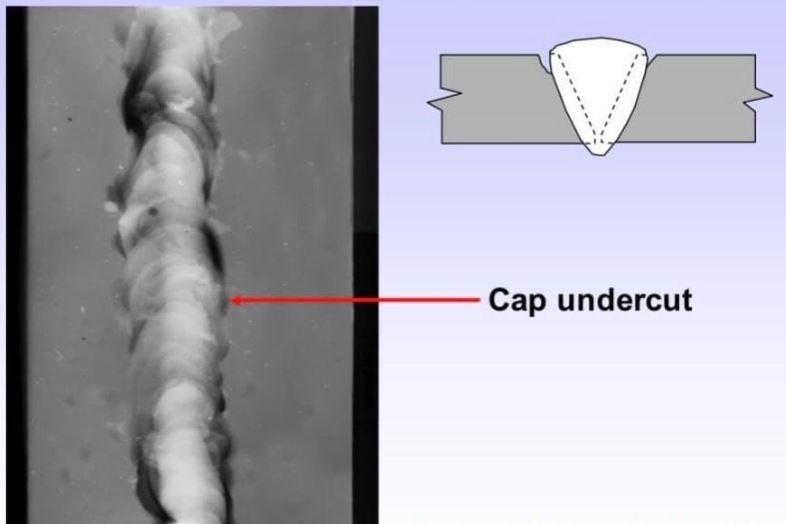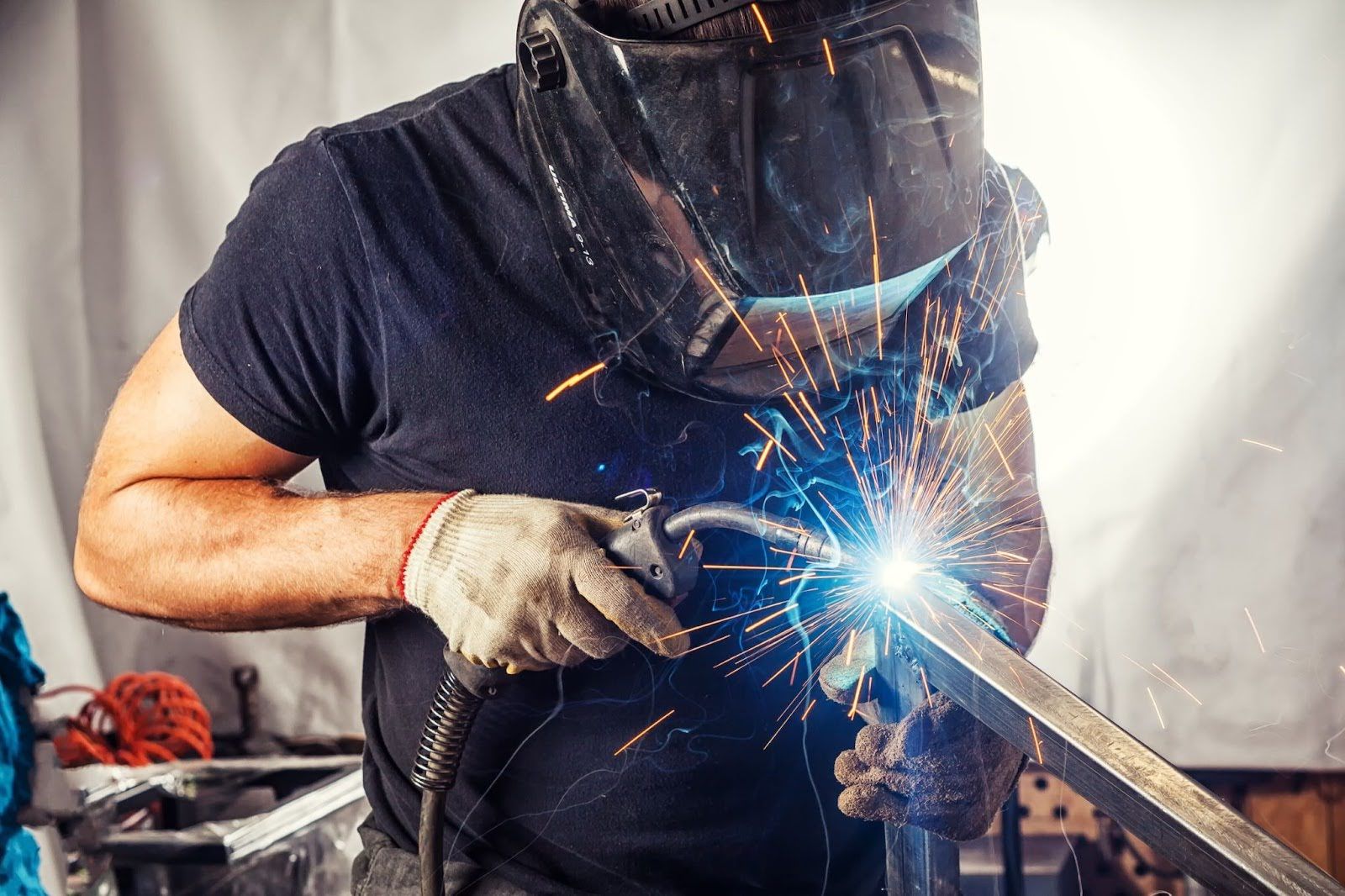Complete Guide to Preventing Weld Undercut: Tips and Techniques
Complete Guide to Preventing Weld Undercut: Tips and Techniques
Blog Article
Understanding the Causes and Solutions for Undercut Welding in Metal Fabrication Processes
In the realm of metal fabrication processes, the occurrence of undercut welding poses a significant obstacle that demands an extensive understanding of its causes and feasible remedies. The detailed interplay of various factors during welding procedures can bring about this unwanted sensation, affecting the structural integrity and overall top quality of the bonded joints - Preventing weld undercut. By exploring the source of undercut welding and exploring reliable therapeutic procedures, producers can elevate the standard of their handiwork and make sure the production of flawless steel elements
Common Root Causes Of Undercut Welding
Frequently neglected in metal construction, undercut welding happens due to numerous factors that demand meticulous attention and know-how to be properly minimized. Additionally, improper welding methods, such as utilizing the wrong welding angle or travel speed, can also contribute to undercut formation. The option of welding specifications, such as voltage, present, and cable feed speed, plays a considerable function in the incident of undercut welding.
Effect of Incorrect Welding Parameters
Unreliable welding criteria can dramatically endanger the honesty and top quality of bonded joints in steel manufacture procedures. The effect of inaccurate welding specifications manifests in various means, bring about architectural weaknesses and problems in the welded parts. One essential facet impacted by improper welding parameters is the infiltration deepness of the weld. Insufficient heat input due to reduced welding currents or excessively high traveling speeds can lead to inadequate combination between the base metals, leading to insufficient joint penetration and compromised bonds. Conversely, too much warm input triggered by high welding currents or slow-moving travel rates can cause burn-through and extreme support, creating a weak and unsteady weld structure. Furthermore, incorrect criteria such as incorrect voltage settings or inaccurate electrode angles can add to unpredictable weld bead accounts, absence of combination, and increased possibilities of defects like damaging. Therefore, thorough attention to welding criteria is paramount to make certain the production of top notch welds with the desired mechanical residential or commercial properties and architectural integrity.
Effect of Improper Lantern Angle
Incorrect torch angle in welding procedures can dramatically influence the high quality and integrity of the final weld joints in steel construction processes. Damaging is an usual welding flaw where a groove develops along the weld toe, weakening the joint and endangering its architectural stability.
A lantern angle that is as well steep can lead to insufficient infiltration, incomplete fusion, and raised spatter. On the various other hand, a torch angle that is too superficial can lead to excessive infiltration, burn-through, and distortion of the base product. Preventing weld undercut. Proper lantern angle is crucial for making sure consistent weld top quality, stamina, and appearance
To stop damaging and other issues triggered by improper lantern angles, welders should be educated to preserve the correct lantern angle throughout the welding process. Normal monitoring and change of torch angles throughout welding can help attain sound welds with marginal issues.
Function of Inadequate Welding Techniques

An additional facet of insufficient welding methods is incorrect weld preparation. Inadequate cleaning of the base steels, wrong joint layout, or inadequate edge preparation can all add to damage welding. Insufficient shielding gas coverage or making use of the incorrect type of gas have a peek at these guys can result in insufficient combination and the formation of undercut defects.
To resolve the function of insufficient welding techniques in steel construction processes, it is vital to offer detailed training for welders. Proper education and learning on welding specifications, joint preparation, and securing gas choice can help protect against undercut welding and make sure top quality welds in steel construction tasks.
Efficient Solutions for Undercut Welding
Addressing undercut welding in steel fabrication calls for executing reliable services to boost weld high quality and architectural stability. Among the primary remedies to fight undercut is to readjust welding parameters such as voltage, existing, and travel rate to ensure appropriate warmth input and fusion. By fine-tuning these setups, welders can prevent extreme melting of the base steel and filler material, minimizing the likelihood of undercut formation.
In addition, proper joint preparation is critical in avoiding undercut. Making certain clean base metal surface areas cost-free of contaminants and utilizing the ideal bevel angle can help promote much better weld infiltration and reduce the risk of undercut - Preventing weld undercut. Utilizing ideal welding techniques, such as weaving or oscillating the torch, can likewise assist in dispersing heat evenly and filling up the weld joint appropriately, minimizing the possibility of undercut problems
Moreover, picking the proper welding consumables, consisting of electrodes and filler metals, is important in reducing undercut. Utilizing products with proper chemical make-ups and mechanical properties can add to achieving sound welds with minimal undercut. Regular inspection and quality assurance measures should also be implemented to spot and deal with undercut issues quickly, guaranteeing the overall integrity of fabricated steel parts.

Final Thought
Finally, comprehending the causes and solutions for undercut welding in steel manufacture procedures is important for accomplishing top quality welds. By addressing common reasons such as inaccurate welding parameters, inappropriate lantern angle, and see post insufficient welding techniques, welders can prevent damaging and guarantee strong, sturdy welds. It is vital to pay attention to these variables and execute efficient remedies to improve the total welding procedure and last product top quality.

Report this page